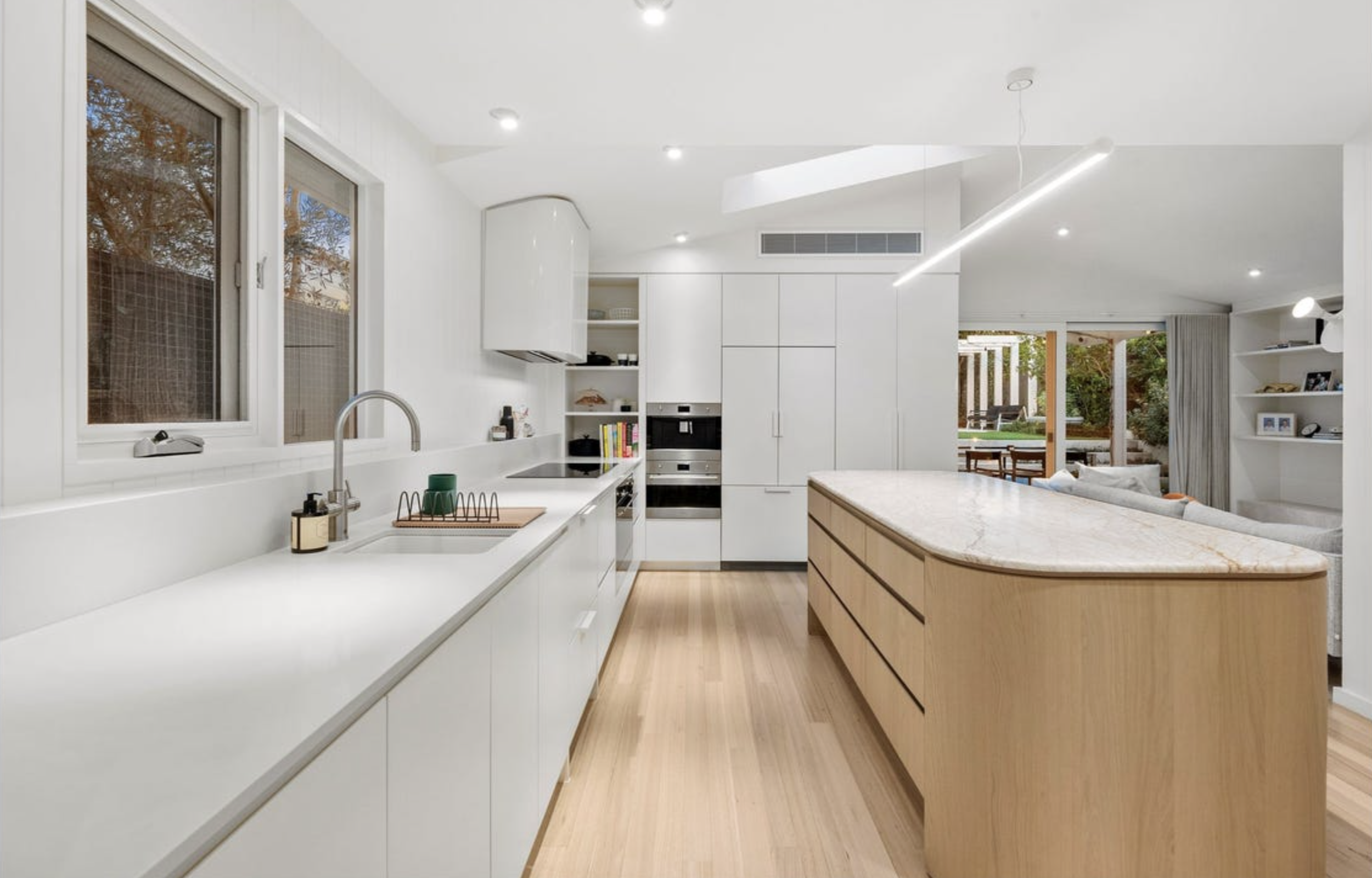Lighting Done Right: How to seek out the downlight for you & your home
If you’re building or renovating your home, lighting is one of the most important decisions you’ll make — just ask any electrician.
Often, people simply go with whatever their electrician recommends. Sometimes this works out, especially if you’re offered a few quality options. But more often than not, you’ll end up with a basic plastic fitting that was chosen because it was cheap and easy to source - not because it’s the best fit for your home. Over time, these fittings can yellow, lose their brightness, and leave you underwhelmed.
If you’re keen to explore better options and keep your electrician on their toes, you’re in the right place.
High quality fittings in a high quality Barwon Heads home
Basic 'pancake' style down lights
Often called ‘pancake lights’ by lighting snobs, these slim-profile LED downlights are everywhere. They come in hundreds of brands and varieties, but not all are created equal. Let’s break down the key differences between low-quality and high-quality versions so you can spot the difference on your next job.
Low-Quality Fittings
They might be cheap, but the benefits usually stop there. Here’s what typically sets them apart:
Thin Polycarbonate Plastics - Most budget fittings are made entirely from plastic. While that’s not always a dealbreaker, these lower-grade plastics often yellow over time - quickly dating your home and giving it a tired, cheap look.
In-Built Drivers - When you see a downlight with just a household plug lead hanging out the back, it’s a giveaway the driver is built in. Built-in drivers trap heat, and heat is the number one killer of LEDs. These fittings usually have poor heat management, which shortens their lifespan.
Light as a Feather -A quick hands-on test can tell you a lot. Cheap fittings feel incredibly light - and that’s not a good thing. Less weight often means less material, less heat sinking, and less overall quality.
High-Quality Fittings
A step up in build and performance, quality pancake-style downlights are worth the investment. Look for:
Heavier Build with Aluminium Components - Better materials mean better durability and improved heat dissipation, which protects the LED over time.
Separate Drivers - Top-quality downlights always come with a separate driver - it reduces heat build-up and increases longevity. They also often have visible heat sinks (long ventilation slots across the back of the fitting) to keep things cool.
Better Light Consistency - High-end fittings offer more reliable colour temperature and brightness over the years - no fading or yellowing to worry about.
Trend RDTL-8- A well priced fitting that ticks all the boxes for quality
Architectural Style Fittings
When it comes to architectural-style downlights, the key features are their deep-set design and ultra-fine trims. These fittings not only sit beautifully on the ceiling but also soften the way light is projected, reducing harshness and creating a more refined finish. More often than not, these fittings fall into the higher quality category mentioned earlier.
Here’s a quick look at the pros and cons of choosing architectural-style downlights:
Pros:
Reduced Glare:
Glare is something many people overlook, but once you’ve noticed it, you can’t unsee it. Deep-set architectural downlights are designed to reduce direct glare, meaning the light focuses on where you need it - not straight into your eyes.
Stylish Finish:
With their slim, neat trims and recessed body, these lights create a much sleeker, more modern look compared to basic ‘pancake’ style downlights. They tend to blend into the ceiling rather than stand out.
Customisable Layouts:
While standard downlights often get thrown into grids of 4 or 6, architectural fittings open up more creative design options. You can pair them above workspaces, highlight artwork, or use them in line with indirect lighting concepts - focusing light where it’s needed rather than flooding the whole room.
Cons:
Higher Price:
There’s no getting around it - architectural-style downlights usually cost more than their basic counterparts. You’re paying for better build quality, more refined design, and improved lighting performance.
Longer Lead Times:
Because these fittings are often made to order or come from specialised suppliers, they’re not always sitting on the shelf ready to go. If you’re on a tight timeline, this can cause a bit of a delay.
Requires Planning:
To get the most out of these lights, they need to be part of your lighting plan from the start. Unlike basic downlights that you can easily drop into a ceiling grid, architectural fittings work best when carefully positioned and often in combination with other lighting features.
When it comes to downlights, not all fittings are created equal. While the cheaper, off-the-shelf options might do the job in the short term, they can leave your home looking tired and dated much sooner than you’d like. Investing in better quality fittings - whether that’s simply a better ‘pancake’ light or stepping up to an architectural-style fitting - can make a big difference in both the look and feel of your space.
If you’re unsure where to start, speak with your electrician about the options or take a look at some examples in lighting showrooms. The right light can completely change a room.



